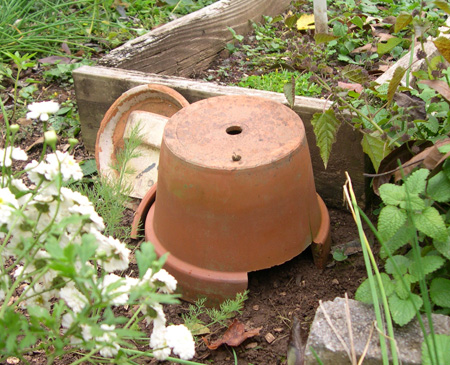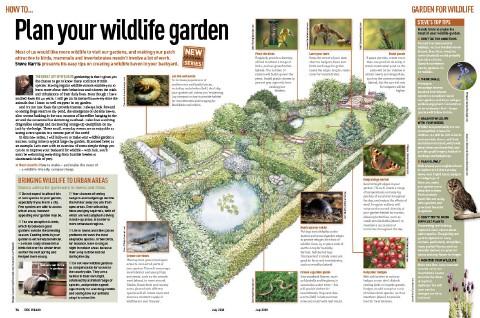Wildlife Gardening in Winter
How to Create a Wildlife Friendly Garden
January seems the ideal time to get philosophical about gardening. After all, it’s so wet that you can’t get in the garden for fear of destroying your lawn and compacting your topsoil beyond repair.
And with events like the RSPB’s Big Garden Birdwatch happening this month, it’s a good opportunity to think about wildlife-friendly gardening. It’s also interesting to think about some plants that wildlife like but gardeners might be less keen on, often known as weeds!
Wildlife gardening is generally pretty easy gardening. The ideal option is to have lots and lots of different sorts of plants, especially native flowers, and then leave your garden alone as much as possible. You don’t want it to be over-tidy, especially not in winter. Fallen leaves provide cover for insects to overwinter, and where you have insects, you will have birds and small animals that eat insects, such as frogs. Dark corners and compost heaps also provide good places for animals to hide, hibernate and overwinter, and a bird-feeder or two will ensure that you have plenty of birds coming in and out.
 But there are other plants which wildlife love, and gardeners are, at best, ambivalent about. A good example of these plants is ivy. Ivy divides gardeners like almost no other plant. Some love it, and some really loathe it. Yes, it will damage an already-weakened wall, and might not be great for trees. But let’s note on the plus side that it’s evergreen, and provides really good cover for small birds in winter. Robins and wrens often choose to nest in ivy. It also flowers late into the autumn, when most other plants have stopped flowering. This extends the season for pollinating insects, which is good for birds and insect-eating animals.
But there are other plants which wildlife love, and gardeners are, at best, ambivalent about. A good example of these plants is ivy. Ivy divides gardeners like almost no other plant. Some love it, and some really loathe it. Yes, it will damage an already-weakened wall, and might not be great for trees. But let’s note on the plus side that it’s evergreen, and provides really good cover for small birds in winter. Robins and wrens often choose to nest in ivy. It also flowers late into the autumn, when most other plants have stopped flowering. This extends the season for pollinating insects, which is good for birds and insect-eating animals.
Other plants which gardeners often try hard to remove are nettles. But there are butterflies that lay their eggs on nettles. Under those circumstances, perhaps you could reconsider? Maybe you could make room for a small patch beside the compost heap, to fill that empty area of top soil where nothing else will grow because it’s too shady? And if your nettle patch is next to a fence, you can also think of it as a burglar deterrent (Plus you can make some great nettle beer in the early summer!). Another plant which has similar burglar-deterring properties, also known as large thorns, is pyracantha. This has beautiful berries which birds love, but there is no doubt that its thorns are a hazard, especially to small children and the unwary. It too is evergreen, providing cover for birds even in the depth of winter.
And weeds are often native plants and prolific flowerers, providing a long season for pollinating insects. If you struggle to keep your garden tidy and weed-free, why not give up altogether, and rebrand it as a wildlife garden?

